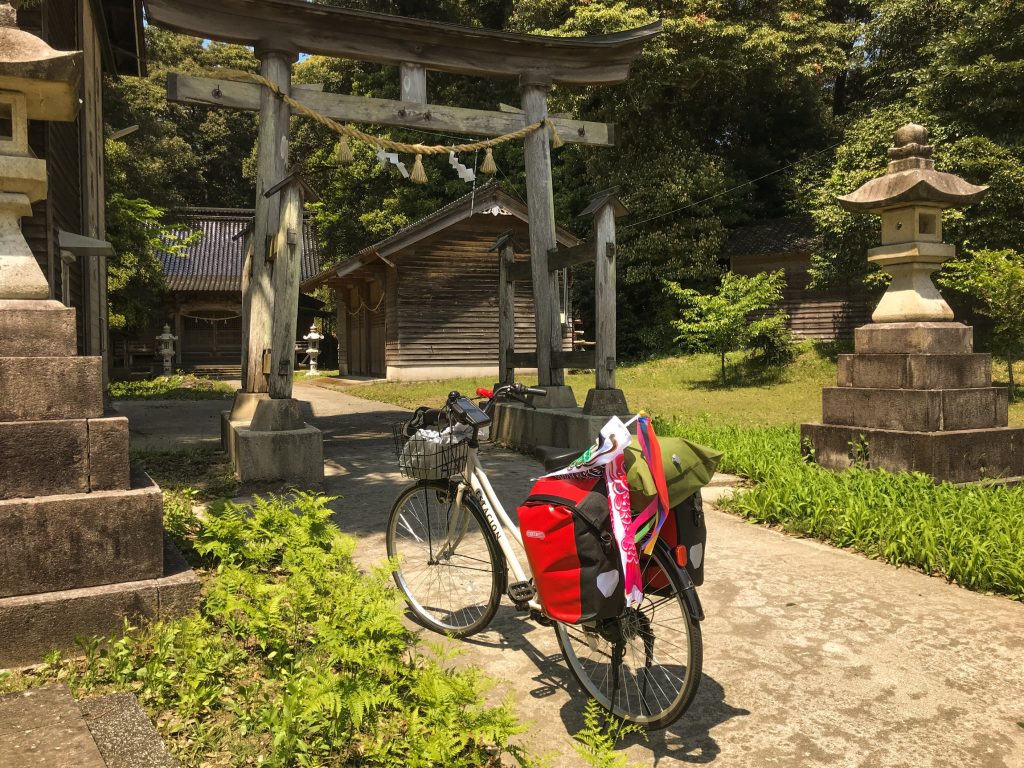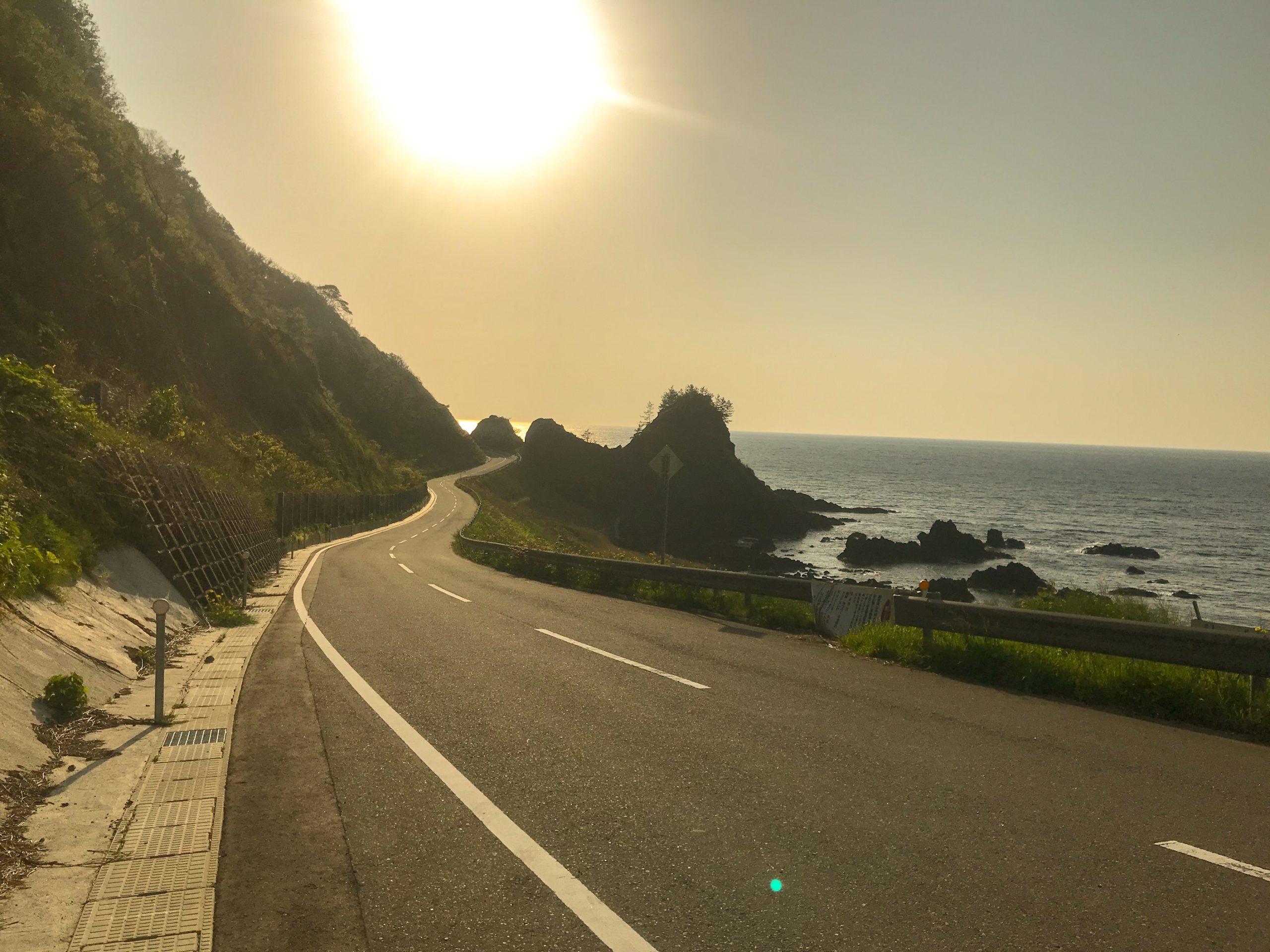I was lucky enough to have this piece published in Metropolis Magazine. You can read that version here.
The Noto Peninsula was once considered the edge of the world. Throughout Japan’s history, the nation’s rulers banished unruly lords to the rugged, windswept cape. Today, Noto retains that feeling of undisturbed isolation — cut off from the hubbub of Japan’s more popular locales.
The name “Noto” is derived from the Ainu (Japan’s indigenous people) word for “big cape.” The landmass juts out into the Sea of Japan – the moodiest of Japan’s seas.
Wanting an adventure, I explored Noto on my commuter bike. I paid for my passage with sunburn and soreness. In return, I saw a side of Japan that had previously been little more than a blur outside the shinkansen window.
My route followed a “つ” shape around Noto’s south, east and north coasts. I rode a mamachari, or “mother’s chariot,” so named for the bike’s capacity to haul anything from groceries to infants. Mamachari are slow, hulking bikes, seldom used for long trips. So, while I barrelled down Noto’s hills like a bowling ball, I mostly traveled at a jogging pace.
On day two I trundled towards Gunkan Jima, or “Battleship Rock.” The island features on practically every one of Noto’s brochures—and for good reason. A sight to behold at sunrise, it rises from the sea like a great imposing mushroom.

Next to Gunkan Jima is Matchmakers Beach. Here, couples can ring the deafening “Bell of Everlasting Love.” After I’d soaked in a nearby onsen (and received an enthusiastic tour of the building by its owner), I camped in Gunkan Jima’s shadow. The bell rang all night.
In 2021, Japan’s central government granted Noto ¥800 million ($7.31 million) in an effort to help the region recover from the pandemic. During my trip, I saw evidence of this subsidy everywhere; from the shiny new Bell of Everlasting Love to the new signage directing my route.
Mostly due to geography, the region missed out on much of the prosperity, glitz and amenities enjoyed throughout Japan’s cities. Bereft of Tokyo’s Skytree or Kyoto’s palaces, Noto’s communities had to get creative in order to attract visitors. Infamously, Noto spent a large amount of its subsidy on “Squid King” — a 13-meter-long fiberglass squid parked by the roadside in Tsukumo.
Tsukumo was once a hub of squid production but had since been mostly abandoned—a familiar tale in rural Japan. To Squid King’s many critics, His Majesty was a frivolous waste of a much-needed handout. Outlets from the New York Times to the BBC reported on the controversy.
When I rolled through, the town was overtaken by what can best be described as squid-mania. Grandparents nibbled dried squid, couples flaunted matching squid t-shirts, and kids screamed for squid balloons. A recent report found that Squid King had since brought in 22 times his original cost in the last year alone. Clearly, the publicity served Tsukumo well.
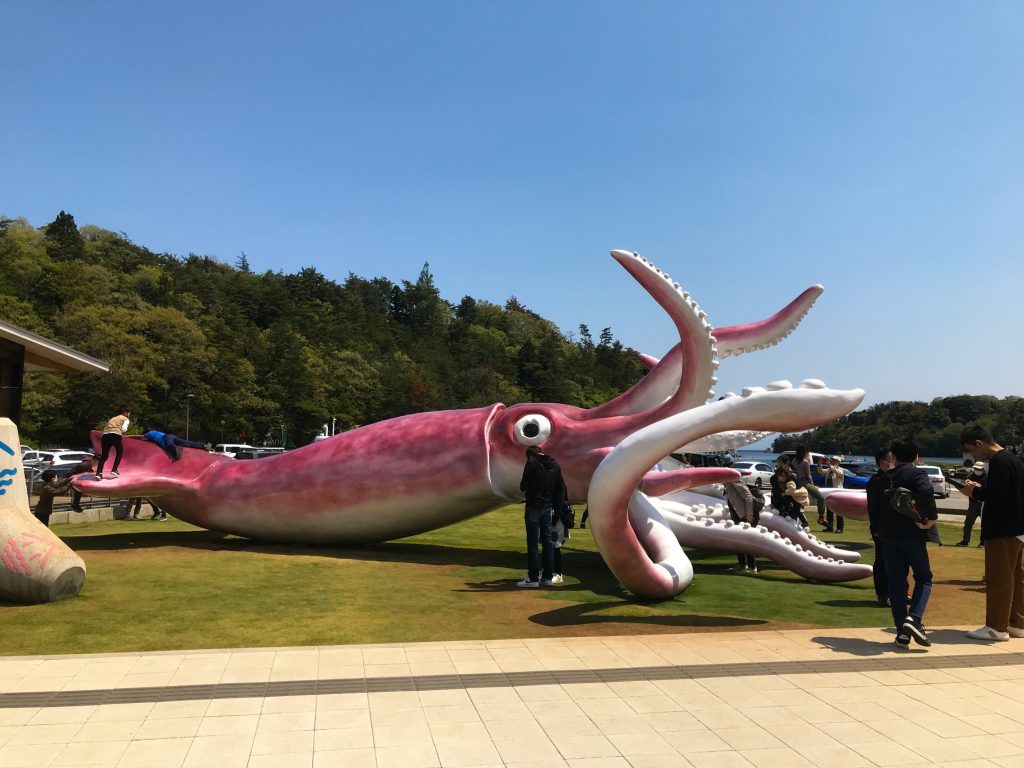
In taking my time in Noto, I stumbled upon many stories like these that told of a region striving for rejuvenation. For decades now the peninsula, like much of rural Japan, has experienced a demographic decline. The evidence is everywhere, from desolate homes to empty villages. Nonetheless, local governments have found creative ways to overhaul Noto’s cultural scene, meaning this aging region is anything but stale.
On my third night I camped outside The Suzu Theater Museum, a converted clifftop gymnasium that was once part of an abandoned high school. This museum turns Noto’s gloomy statistics into something hopeful, if not beautiful, by reworking evidence of its shrinking population into works of art. Carefully arranged by local artists, the exhibits display everyday items found within Noto’s many vacant homes.
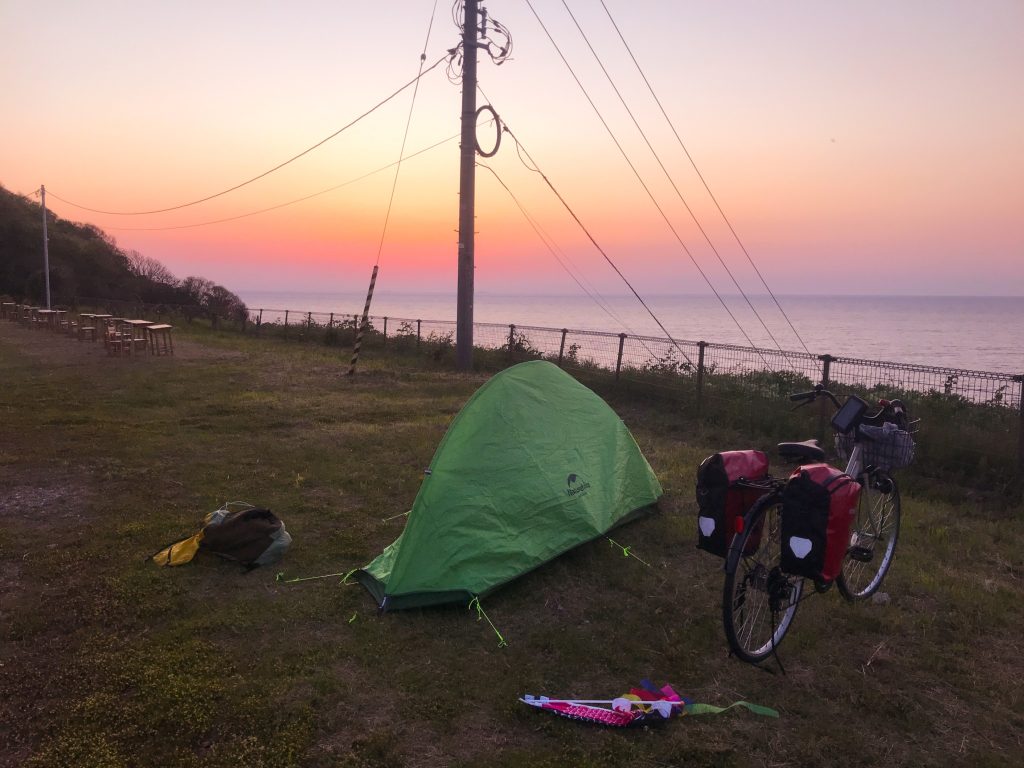
Arrayed across the walls was family porcelain with no one left to inherit it. Home movies and clips of the sea played on vintage televisions — their owners having long departed. My visit was melancholy. Yet, it was also inspiring, for it showed a community’s determination to preserve and share the memories of those who had once called Noto home. It’s representative of the peninsula’s knack for adapting its past and present into something worth seeing.
A culinary example of this quality can be found in the salt farms on Noto’s north coast, which I rode through on my fourth day. These farms use a method of salt production called agehama, a centuries-old technique that requires over ten years’ training to master. The Samurai lords of present-day Kanazawa coveted this salt for its unique taste. Today, the nearby Sio cafe uses it to make pancakes. Light, fluffy and inexplicably crunchy; they were delicious.
On my fourth and final night, I camped in Wajima, a town on Noto’s north cape famous for its millennia-old crafts industry and weekend market. The town was packed with tour buses, each having traveled up Noto’s central highway from the mainland. The next day, these same buses whisked tourists to Wajima’s scenic rice terraces, stopped at Squid King, then sped back to Kanazawa.
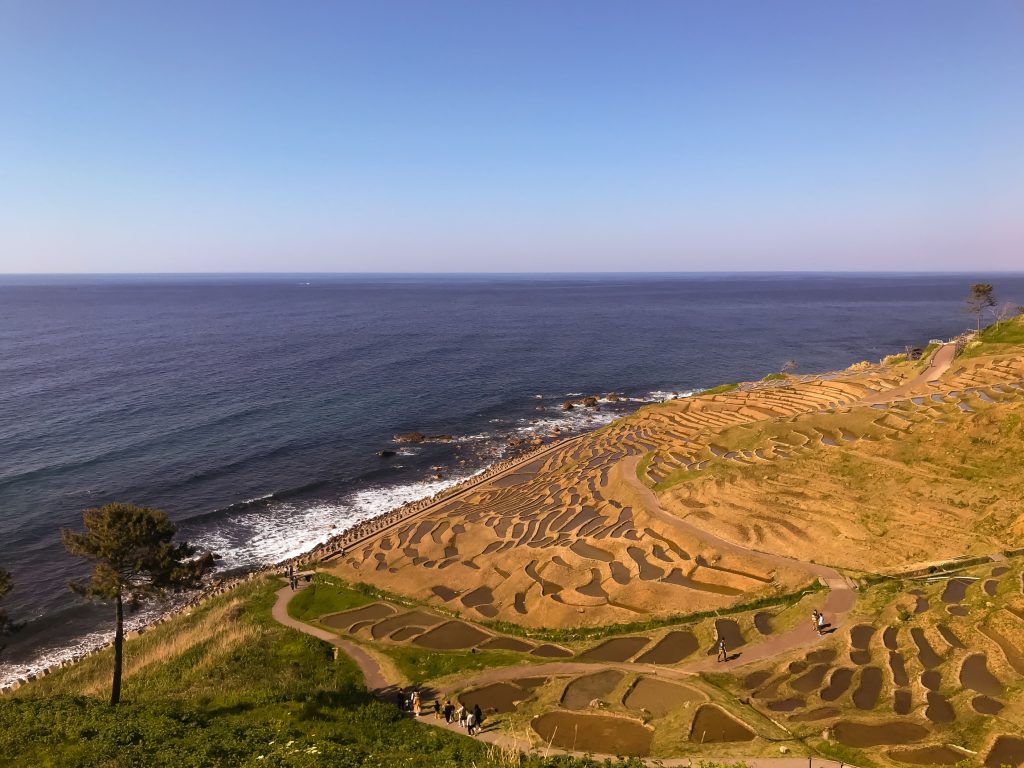
To tour Noto this way is to miss the tales and quirks that make the peninsula truly worth visiting. Though the windswept coast may be quiet, there are treasures and stories to be found in the backwoods. If you travel too quickly, you’ll fly right past them.
Should you bike, as I did, Noto will certainly extract a fee. You’ll be sore, sunburned and (if unlucky) rained on. Yet, the peninsula will also reward you with an experience no city tour can provide.
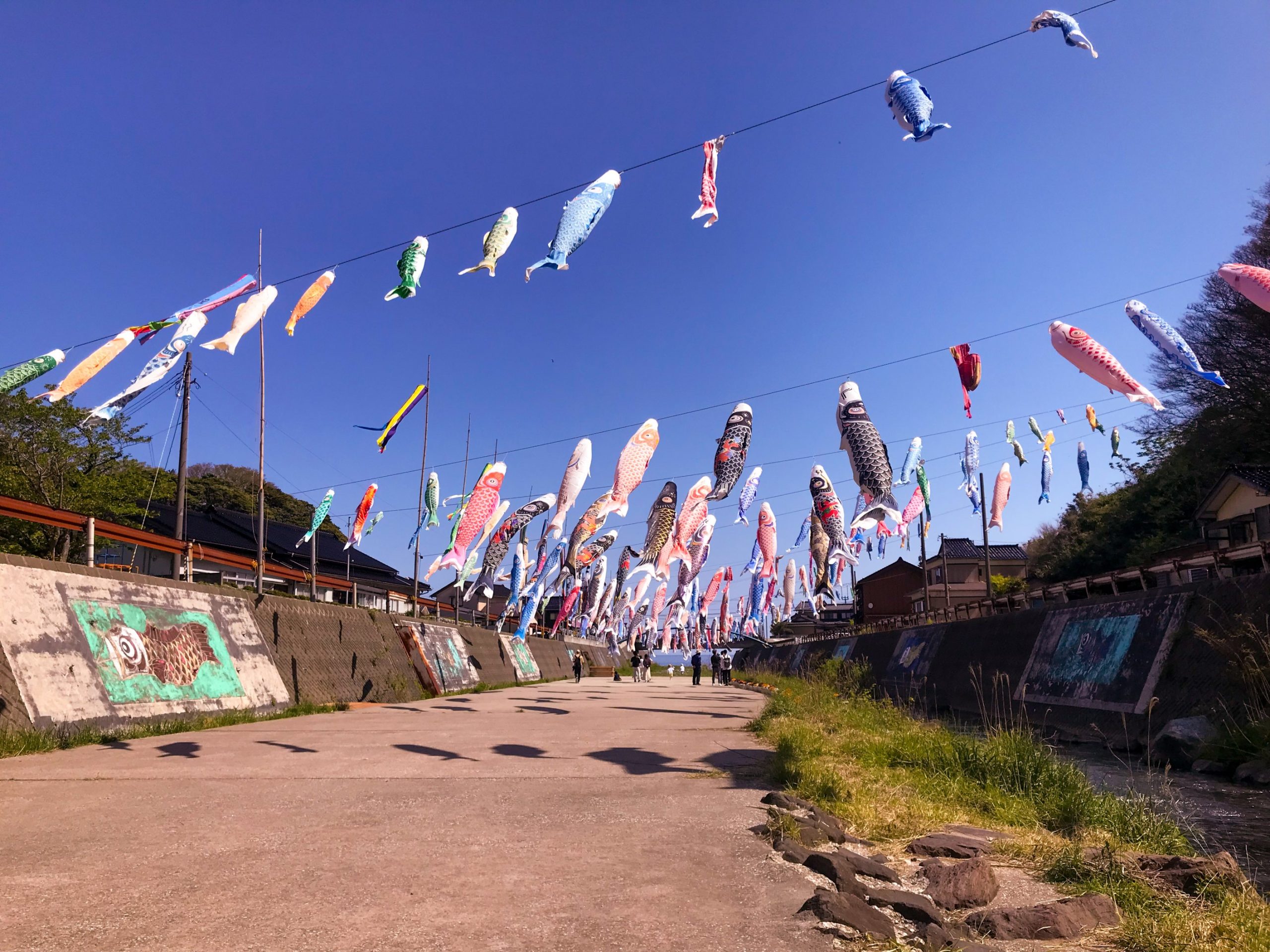
300 Koinobori (鯉のぼり), or “carp streamers” flutter in the wind in the village of Otani. Koinobori are flown all over Japan from April through to May in honour of the national holiday “Children’s Day.”
I watched the last sunset of my trip in Wajima. Tired and filled with grilled fish, I soothed my sunburn in the sea beneath a lighthouse. Squid boats drifted lazily across the horizon, their lights indistinguishable from the stars.
I felt a pang of jealousy towards those banished lords who got to live out their days in manor houses amidst this desolate, beautiful land. Sure, threats of decapitation kept them here, but why would they ever want to leave? Between an eternity in Noto and an eternity in Tokyo, give me Noto.
